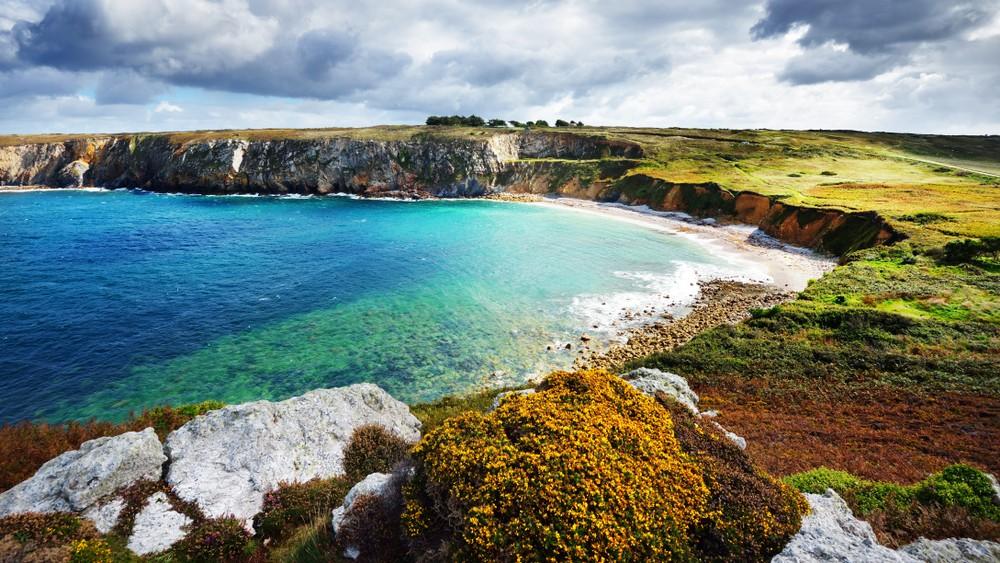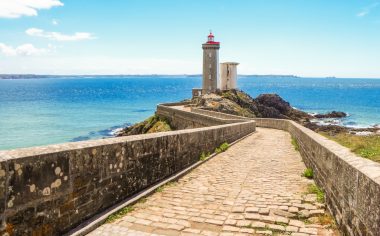
Brittany is one of the most fascinating regions in France. The approximately 2,700 km of coastline with its rugged rocks and secluded bays is simply magical and travelers can hardly escape its charm. The historical heritage of Brittany is particularly interesting with numerous historic towns, castles and palaces.
A brief history of Brittany
From the 6th century onwards, it was the Celts who left their mark on Brittany for the first time. They called the region Aremorica, which will certainly be familiar to some readers of Asterix. Julius Caesar, a well-known historical ruler, had a decisive influence on the region. With him, the Romans and the Bretons who gave it its name came here. The tribe from the British Isles created Brittany (britannia minor = Little Britain) as we know it today.
The Duchy of Brittany experienced its heyday in the Middle Ages and countless buildings still serve as evidence of its former power. The independence ended in 1532, when the duchy joined France .
Discovering Brittany
In addition to the beautiful beaches and the exciting coastline, it is above all the cultural heritage that makes Brittany so interesting. A camper tour through the fascinating region is recommended to discover as many cultural highlights as possible. Thanks to the bookability of numerous campsites in Brittany on PiNCAMP , the route and overnight stays can be planned optimally. Whether in your own motorhome on an idyllic pitch or in comfortable mobile homes – this decision is likely to be particularly difficult in view of the variety.
Cultural highlights of Brittany

Although there are two very well-known cities in Brittany, Rennes and Nantes, Saint-Malo is one of the most popular places to go. The former seafaring town magically captivates visitors and exerts a great attraction with its location and charm. The cosis city is also known for its lighthouses, with the “Phare d’Eckmühl” standing out from the crowd once again. 52 of the 148 known lighthouses are located in Brittany alone.
Nevertheless, travelers should not ignore Rennes. Today’s capital of Brittany inspires with its medieval backdrop with around 280 half-timbered houses in the city centre, which have been preserved to this day with their construction. If you want to experience the pulsating life in the student city, you should visit the Marché des Lices on Saturday morning, where the second largest life market in France has been opening its doors since 1632.
The small towns and villages of Brittany have a lot of charm. Considered the “Little Venice”, Pontrieux is just as worth seeing with its bridges as Locronan. One of the most beautiful villages in France often serves as a film set with its medieval appearance, also because the antennas, traffic lights and cable routes that are otherwise often visible are not present. In Rochefort-en-Terre, visitors can experience the atmosphere of yesteryear, as it comes alive here with its ramparts, numerous manor houses and castle.
Castles and palaces in Brittany
Due to the medieval heyday, Brittany is home to a large number of castles, chateaux and manor houses. The Château de la Bourbansais from the 16th century is a wonderful testimony to Breton architecture and, in combination with the lovingly tended gardens, a recommended destination. The Château de Dinan in the Côtes-d’Armor department is part of a fortification that encloses a town called Dinan and is therefore a bit more defiant. L’Abbaye de Daoulas seems much more stately, although it is an abbey, a sacred building. The Château de Kerguéhennec is probably the ideal of French castles with its impressive architecture and beautiful gardens.
The list of beautiful castles and palaces can be continued indefinitely, because Brittany is rich in historical buildings.
Experiences in Brittany
Visitors to Brittany do not have to miss out on special experiences. The fascinating underwater world can be discovered in the “Park Océanopolis” in Brest. More than 1,000 species can be viewed in 77 aquariums. The impressive submarine bunker complex of Lorient and the on-site “Cité de la Voile Éric Tabarly” adventure museum provide rare insights. The menhirs near Carnac, 3,000 in number, are a testimony to the Neolithic Age, the significance of which has not yet been fully understood.
With these experiences and sights, you can take a wonderful and varied trip to Brittany that will certainly be remembered.

